Bedrooms vary in size, shape, function, and design, catering to different needs and preferences. Typical sizes range from 100 square feet (9 square meters) to 130 square feet (12 square meters) for standard bedrooms, accommodating essential furniture like beds and nightstands, to 325 square feet (30 square meters) for grandmaster suites with luxurious amenities. The primary function of a bedroom is to provide a private space for sleep and relaxation. Furniture like beds, nightstands, dressers, and chairs enhances functionality and comfort. The shape of bedrooms is rectangular, influencing layout and furniture arrangement, maximizing space and circulation. Standard ceiling heights in bedrooms are between 26 square feet (2.4 square meters) and 29 square feet (2.7 square meters). Popular bedroom colors include calming hues like blue, grey, and green, contributing to a restful atmosphere. Energy efficiency in bedrooms is achieved through insulation, efficient lighting, and temperature management. Key factors affecting renovation costs include layout, furniture, client needs, material selection, and budget. Architects can aid in bedroom upgrades, offering expertise in space planning, material selection, and budget management. The duration for redecorating a bedroom varies from 2 to 6 weeks, depending on the project’s scope. Homeowners face challenges in redecorating, such as space limitations, budget constraints, and style decisions. Overcoming these struggles involves careful planning and consideration of various factors like lighting, storage needs, and material selection.
What is the typical size of a bedroom?
A typical bedroom size ranges from 100 square feet (9 square meters) to 130 square feet (12 square meters). This fits a 5-foot (1.5 meter) to 6-foot (1.8 meter) bed with 2-foot (0.6 meter) nightstands, leaving 1.5-foot (0.5 meter) clearance on either side. The layout includes a 2-foot (0.6 meter) dresser and a 3-foot (1 meter) extra walking space. The ceiling height is 8 feet (2.4 meters) for lighting. The 100-130 square foot (9-12 square meter) area suits one or two residents. The average bedroom measures between 130 square feet (12 square meters) and 160 square feet (15 square meters), fitting a 6-foot (1.8 meters) to 6.5-foot (2 meters) bed flanked by 2-foot (0.6 meters) nightstands with a 3-foot (0.9 meters) dresser and seating corner. A ceiling height of 8 feet (2.4 meters) is typical. The expanded 130-160 square foot (12-15 square meter) footprint provides more private retreat flexibility.
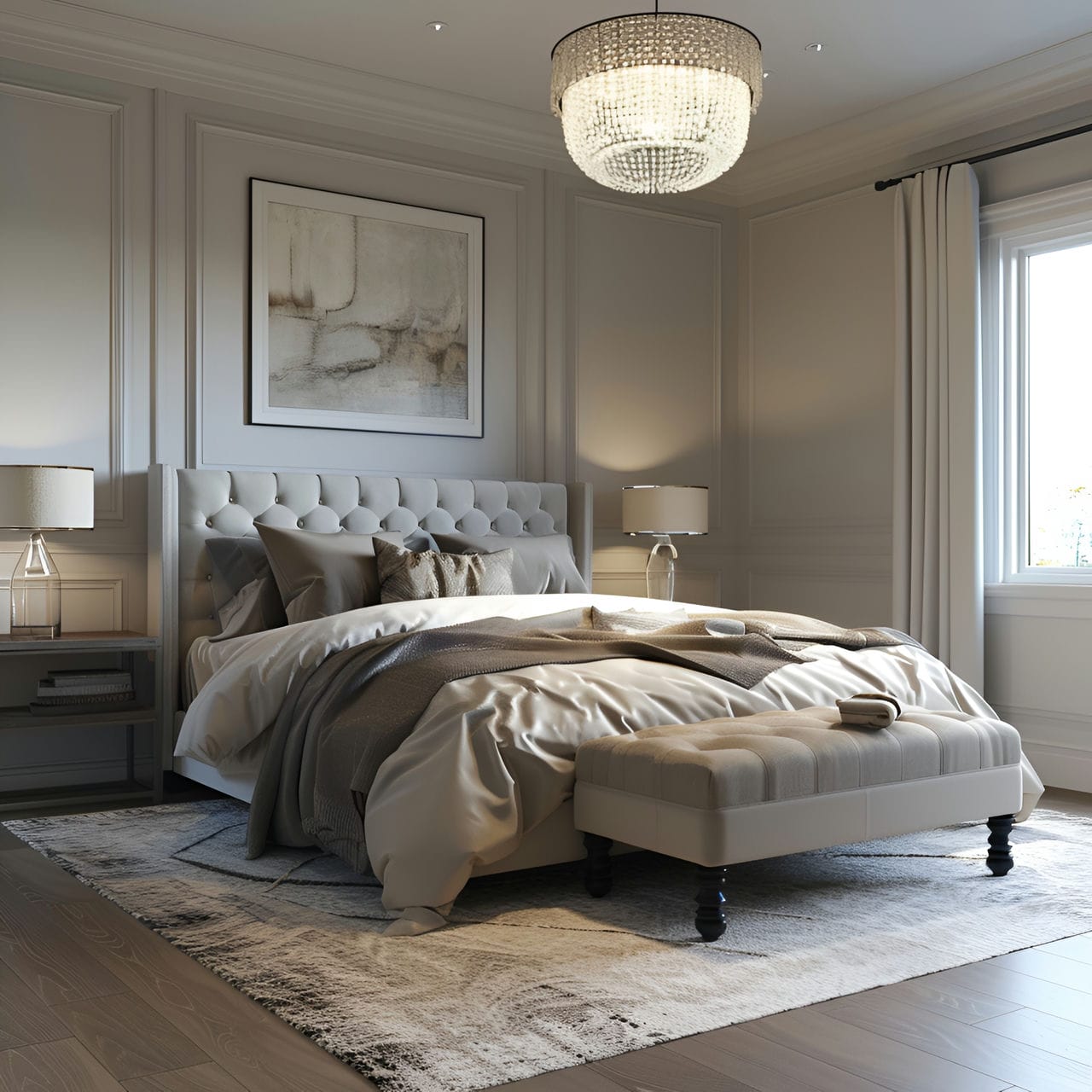
Grandmaster bedrooms exceed 215 square feet (20 square meters), frequently reaching 325 square feet (30+ square meters). Soaring 9 feet (2.7 meters) to 10-foot (3 meters) ceilings allow a spacious 6.5-foot (2 meters) to 8-foot (2.4 meters) bed. An additional sitting room, giant closets, and direct en suite bathroom connections complete the accommodations.
What is the use and purpose of a bedroom?
The purpose of a bedroom is to provide a quiet, private space for sleeping and a retreat for homeowners. Firstly, a bedroom is a room within a house, apartment, or other dwelling used primarily for sleeping. Bedrooms contain crib, twin, queen, or king beds to accommodate one or more people sleeping. They have additional bedroom furniture like nightstands, dressers, closets, and seating to facilitate other activities beyond sleeping. Secondly, bedrooms provide privacy, quietness, and quality sleep for physical and mental health. Bedrooms are located away from noisier living areas and have doors that can be closed to dampen sounds. The bedroom environment is optimized for healthy sleep by controlling light, temperature, and comfort features like soft bedding. Lastly, bedrooms reflect personal style and priorities. The decor, furniture, artwork, and layout showcase the occupant’s tastes and personality.
What is the typical shape of a bedroom?
A typical bedroom shape is a rectangle from 5 feet (1.5 meters) across the narrow width to over 8 feet (2.5 meters). This shape provides flexibility to accommodate key furniture pieces while maximizing space around them and allows clear circulation paths. Standard rectangular bedroom layouts position beds against the longest wall, measuring 3 feet (0.9 meters) from corners with 6.5 feet (2 meters) of open floor for moving around. The short edge spans 6.5 feet (2 meters) to 8 feet (2.5 meters). This shape concentrates essential bedroom components, like layered nesting side tables and dressers spanning 2 feet (0.6 meters), conveniently along one side, leaving the rest roomy for activities. Concise square master suites ranging from 25 square feet (2.5 square meters) to 40 square feet (3.5 square meters) keep key components centrally accessible with paths around the bed and furniture. 2-3 solid walls may enclose the remaining layout.
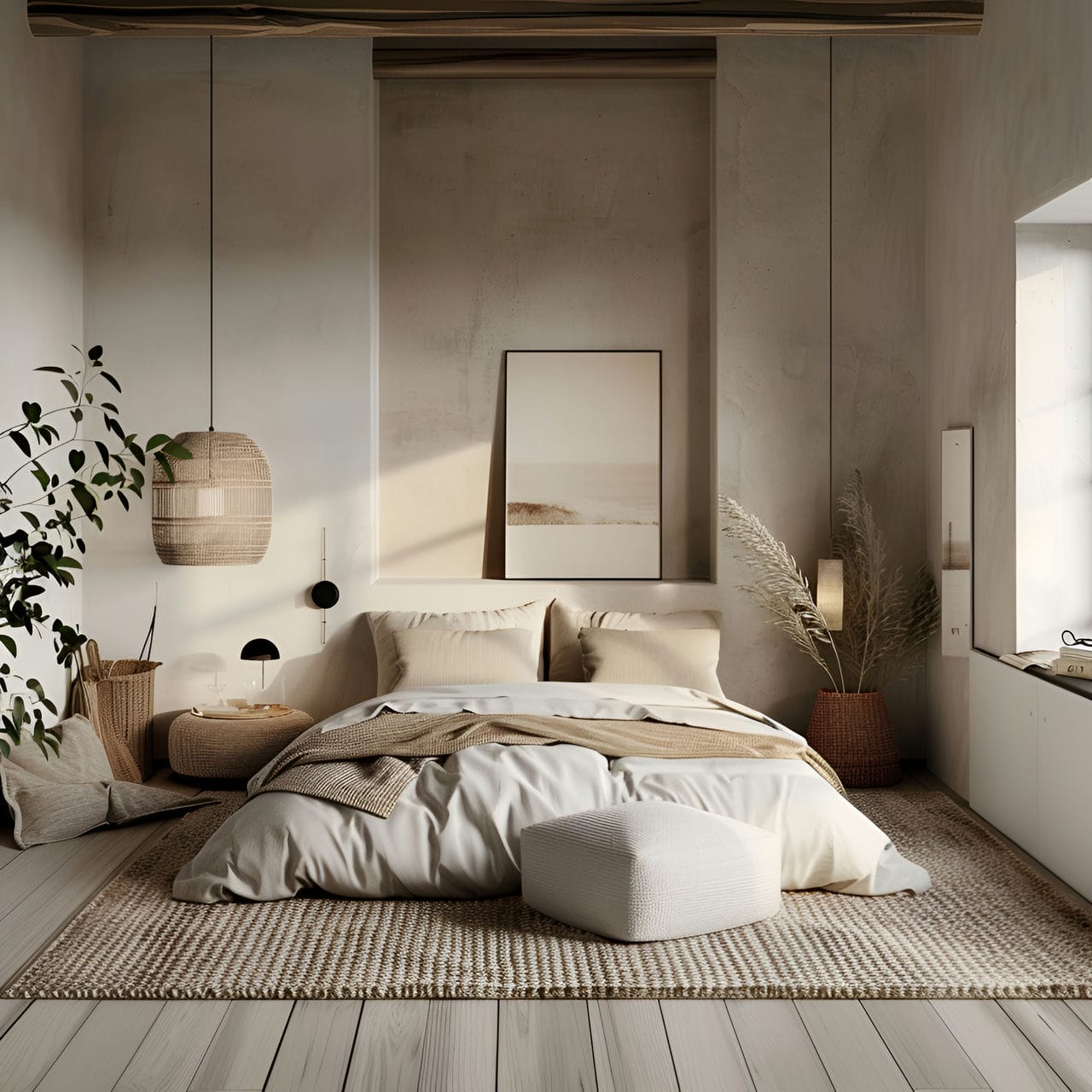
What furniture commonly equips a bedroom?
Listed below are the types of furniture commonly equip a bedroom:
- Bed: The most essential piece of bedroom furniture. Beds are available in sizes from twin to California king and provide a place to sleep and rest. Frames can range from simple metal rails to ornate wood poster beds, with or without headboards or footboards. The bed is the central focus around which the rest of the room is designed.
- Nightstand: Nightstands offer convenient bedside storage and surfaces for lamps, alarm clocks, books, glasses, and other personal items in the bedroom. This furniture is sold in pairs and comes in various styles, from minimalist metal frames to detailed wood pieces with drawers and open shelving.
- Dresser: Dressers are furniture that provides necessary storage space for clothing, especially in bedrooms lacking closets. They come in many sizes, finishes, and configurations to match any decor. Dressers store folded clothes, undergarments, accessories, and more.
- Chest of drawers: Chest drawers offer abundant clothing storage with small stacked drawers in bedrooms. Chests tend to be shorter and broader than dressers. They make excellent additions for storing sweaters, T-shirts, socks, pajamas, and other bedroom apparel needs.
- Armoire: Armoires are upright furniture storage cabinets perfect for concealing longer garments in the bedroom. The tall, narrow shape fits well in tight spaces. Convenient pull-down hanging rods and adjustable shelves accommodate various clothing types, from dresses to pants.
- Desk: Desks are must-have bedroom furniture for students or professionals working from home. Available with drawers, shelves, and cubbies, desks provide work surfaces and storage that foster productivity. Modern designs allow desks to blend into bedroom decor when not used.
- Chair: An upholstered chair or two in the bedroom creates a cozy seating area. Thus, bedroom furniture offers a comfortable place to lounge when reading, relaxing, or getting dressed. Swivel desk chairs also accompany workstation areas. Bedroom chairs increase usable living space.
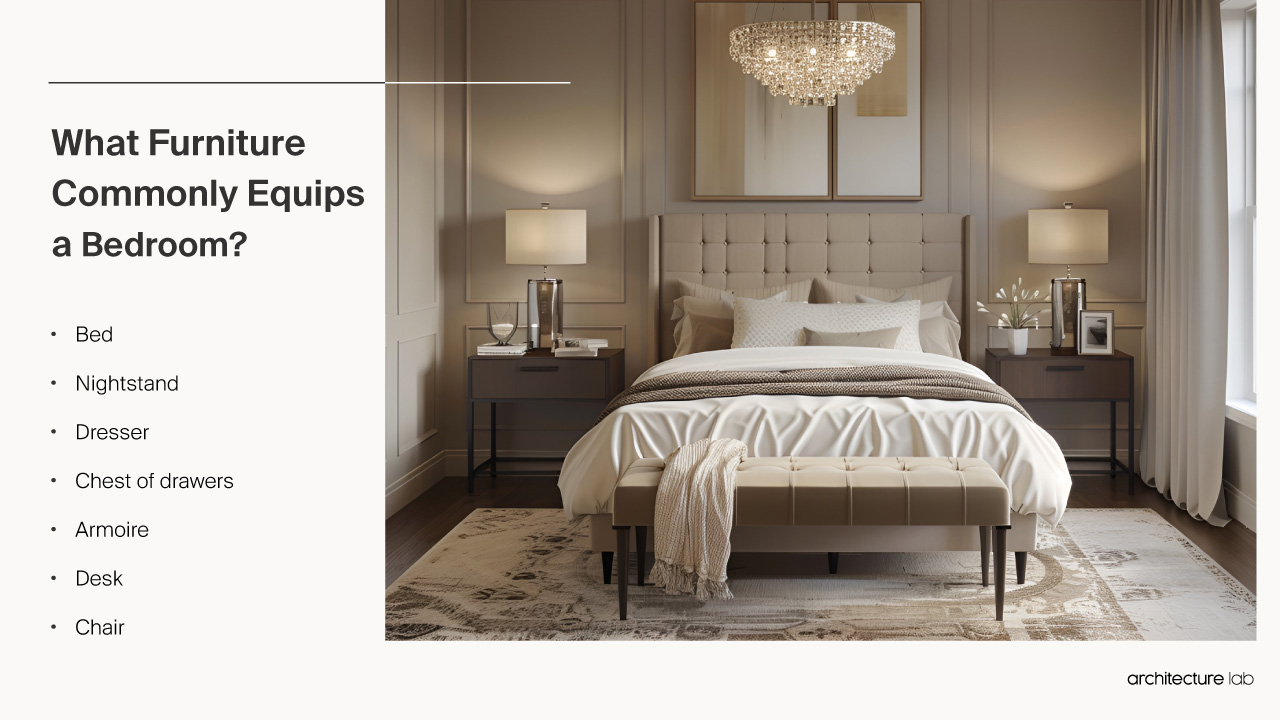
What is the normal ceiling height of a bedroom?
The normal ceiling height of a bedroom ranges from 26 square feet (2.4 square meters) to 29 square feet (2.7 square meters). Contemporary bedrooms may incorporate ceilings from 27 square feet (2.5 square meters) to 30 square feet (2.8 square meters), providing a generous sense of volume. Smaller footprint bedrooms under 100 square feet (9 square meters) feel cramped, with ceiling heights exceeding 29 square feet (2.7 square meters). Luxury master suites elevate architectural details with ceilings up to 38 square feet (3.5 square meters).
What colors are the bedrooms usually painted?
Listed below are the colors traditionally used in bedrooms painted:
- Blue: Bedrooms often feature blue color due to its calming effect. This color promotes relaxation and calmness. Lighter shades like sky blue can make a room feel airy and spacious, while darker shades like navy create a sense of sophistication and depth.
- Grey: Grey in bedrooms offers a modern, sleek look. This color allows it to pair well with various decor styles and colors. Lighter greys can create a soft, serene atmosphere, whereas darker greys add elegance.
- White: White is a classic bedroom choice, symbolizing cleanliness and simplicity. It creates a peaceful and blank canvas for accent colors and textures. White can make small bedrooms appear more extensive and more open.
- Green: Green in bedrooms brings a sense of nature. Green colors like sage or olive create a soothing environment conducive to rest. Green is often associated with renewal, making it a comforting choice.
- Beige: Beige bedrooms are warm and inviting. This neutral color pairs well with other warm tones and natural materials, creating a cozy and comfortable atmosphere. Beige is a versatile choice, easily adaptable to different styles and preferences.
- Purple: Purple in bedrooms can range from soothing to luxurious. Lighter colors like lavender create a restful environment, while deeper purples like plum add richness and sophistication. Purple is associated with creativity and luxury.
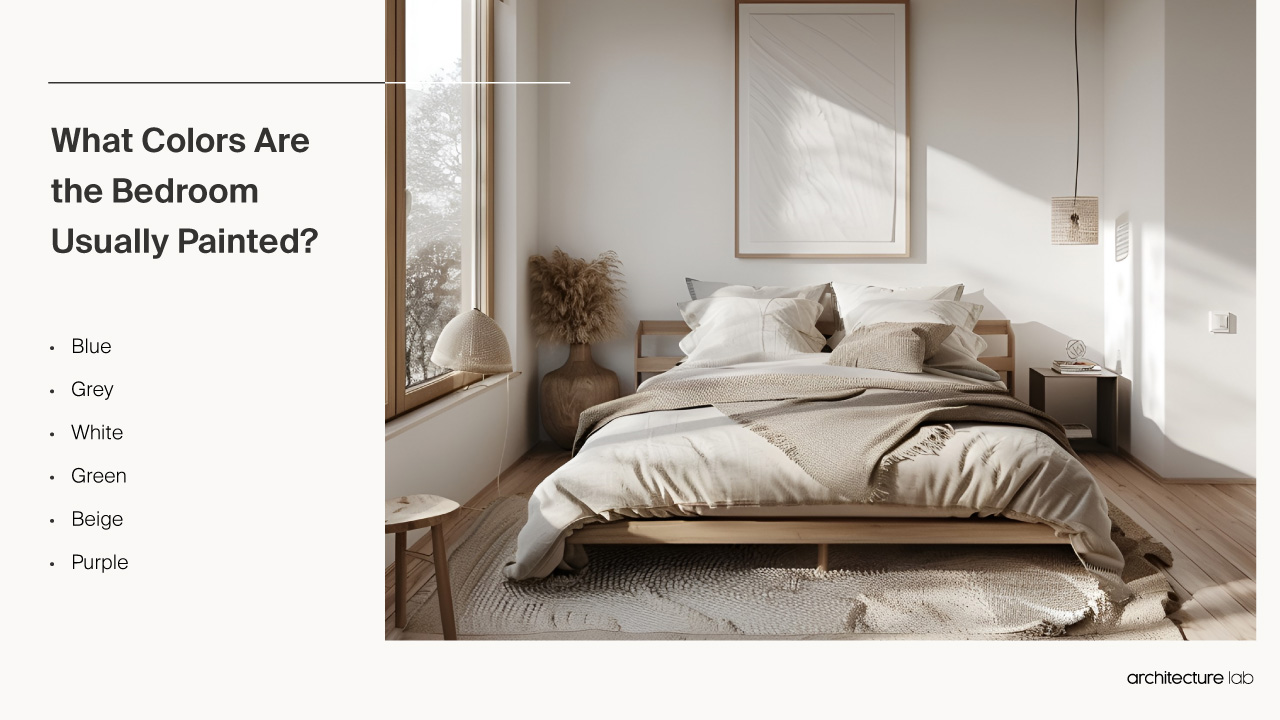
What makes the bedroom functional?
The bedroom is functional with multi-functional furniture, creative layouts, and adjustable lighting, customizing the room’s versatility for work, relaxation, and storage needs. Firstly, the bed is a bedroom’s most essential functional element. A high-quality, comfortable bed allows for good sleep, which is the room’s primary purpose. The size and type of bed should suit the needs of the occupant(s). Nightstands, lamps, and bedding are also optimized for bedroom functionality for sleep. Secondly, adequate and accessible clothing storage makes a bedroom functional. Dressers, closets, shelves, and other storage furniture keep clothes organized. The quantity and configuration of storage should align with the occupant’s needs. Thirdly, multi-functional furniture expands how the bedroom space is utilized. Convertible furniture like sofa beds and storage beds serve multiple needs. Desks and seating allow the room to double as a home office or reading nook. Creative layouts define separate zones for sleeping, working, and lounging within the same room. Lastly, lighting plays a crucial role in bedroom functionality. Windows provides natural light during the day. Lamps, overhead lighting, and accent lighting make nighttime use feasible and create ambiance.
How is energy efficiency achieved in a bedroom?
Energy efficiency is achieved in a bedroom by sealing the bedroom, adding insulation, managing lighting and devices, adjusting thermostat setpoints, and using efficient appliances. Firstly, energy efficiency in a bedroom starts with proper insulation, sealing, and window treatments. Insulating walls and ceilings ensures heating and cooling do not escape. Heavy curtains or blinds help regulate temperatures. These measures allow climate control systems to work less to maintain comfort. Secondly, as an energy-conscious greenhouse, lighting and electrical devices should be managed to conserve energy. Use dimmers, occupancy sensors, or timers to ensure lights are only on when needed. Unplug devices like TVs, phone chargers, and computers when not in use to avoid phantom load. Replace incandescent bulbs with LEDs, which use a fraction of the energy. Laptops are far more efficient than desktop computers for the bedroom. Thirdly, adjust the thermostat to reduce HVAC runtime. Simply dialing down the temperature a few degrees in winter or up a few in summer can make a noticeable impact. Ceiling fans allow air conditioning systems to be set higher. Keeping doors and windows closed helps maintain the desired temperature without overworking the heating and cooling. Lastly, use energy-efficient appliances and practice conservation behaviors. Choose a mattress pad over an electric blanket for warmth. Hang dry laundry instead of using the dryer when possible. Take shorter showers with low-flow showerheads. Ensure any supplemental appliances like a mini fridge are Energy Star rated.
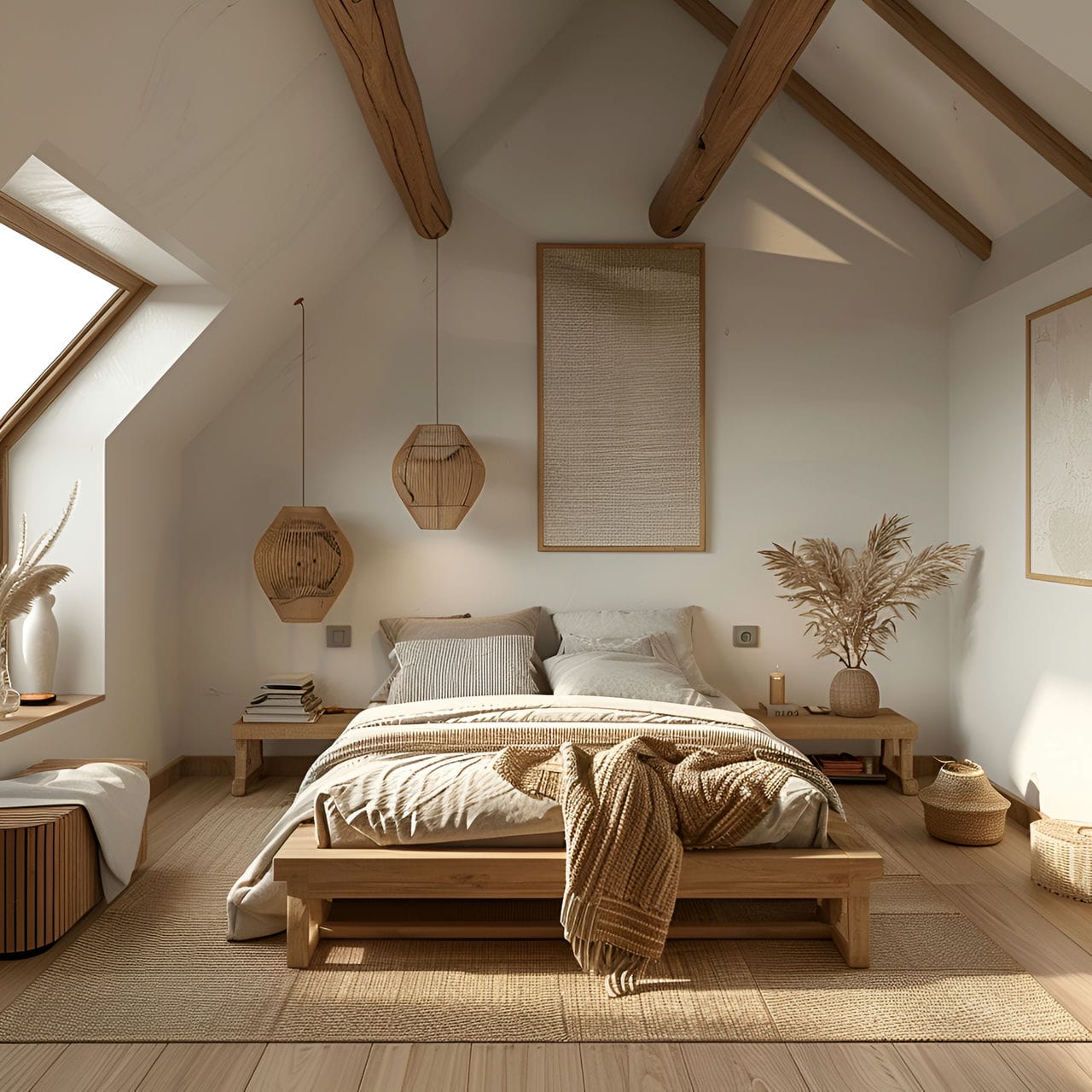
How much does it typically cost to renovate a bedroom?
The average cost to renovate an existing 110 square foot (10 square meter) to 160 square foot (15 square meter) residential bedroom falls between $5,000 (€4,500, £3,800) to $15,000 (€13,500, £11,400). Cosmetic updates like paint, new flooring, and lighting fixtures run closer to $5,000 (€4,500, £3,800). Structural changes like altering closet or wall layouts and moving electrical or HVAC equipment require specialized contractors, driving prices toward $15,000 (€13,500, £11,400). New essential furniture like beds cost $800 (€720, £600) to $3,000 (€2,700, £2,300). Luxury customized storage closets or built-ins fall $3,000 (€2,700, £2,300) to $10,000 (€9,000, £7,600). For contemporary master suites with spa-style bathrooms, premium materials, and architectural detailing, expect costs above $25,000 (€22,500, £18,900). Typical bedroom update budgets range from $5,000 (€4,500, £3,800) to $15,000 (€13,500, £11,400). Major footprint reconfigurations accommodating structural changes or design can increase bottom lines past $50,000 (€45,000, £37,500). Most standard bedroom makeovers remain $5,000 (€4,500, £3,800) to $10,000 (€9,000, £7,600), while opulent master suites match visions.
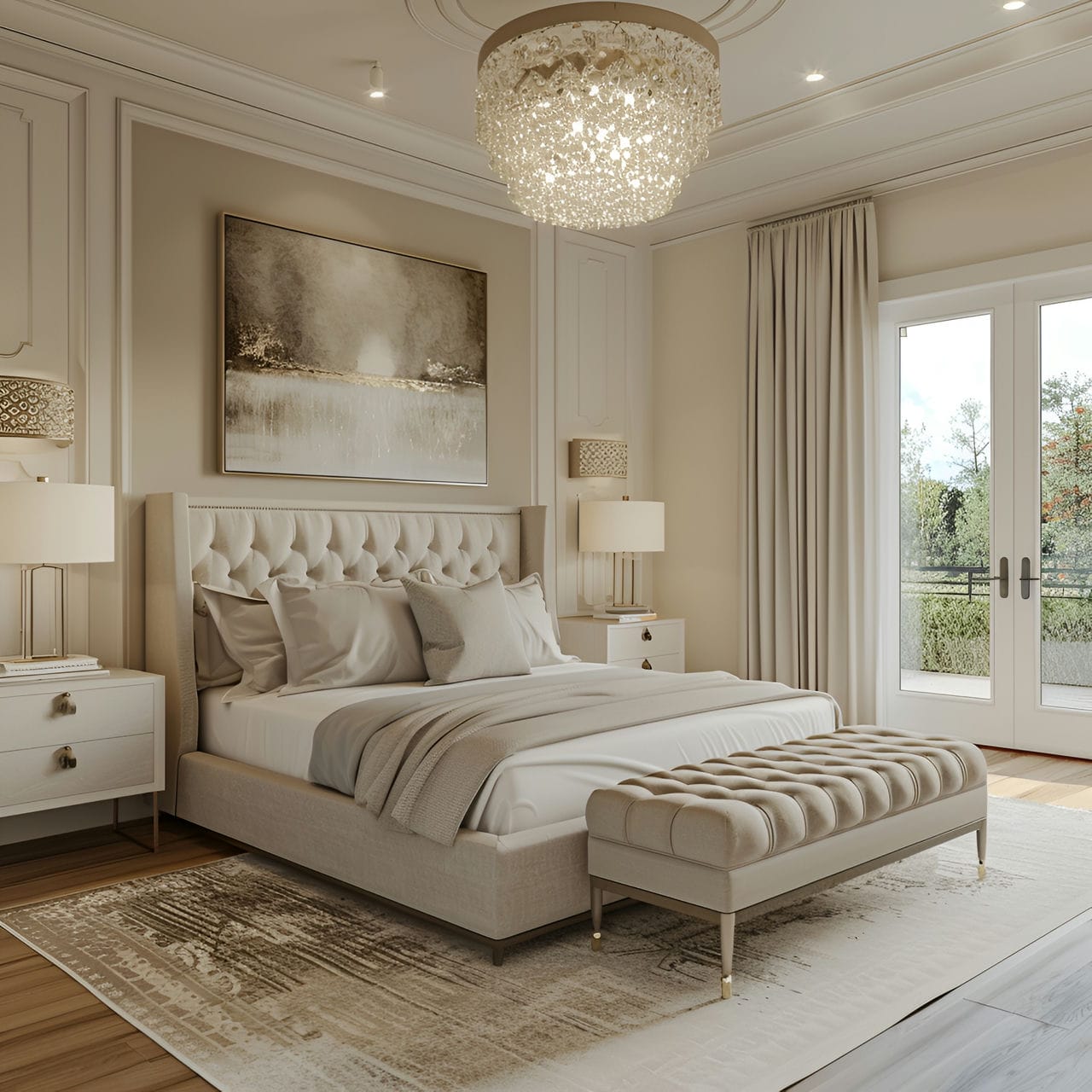
What factors affect the bedroom renovation?
Listed below are the factors affecting the bedroom renovation:
- Space layout: The bedroom layout is crucial. It determines the placement of furniture and other elements. The layout should be designed to maximize space, ensure easy movement, and create a comfortable and functional environment.
- Furniture: The type, size, and placement of furniture impact a bedroom renovation. Furniture should be chosen based on the room’s size, the homeowner’s needs, and the design theme.
- Client’s needs: The homeowner’s needs and preferences are paramount in a bedroom renovation. These may include the need for storage, a workspace, or specific aesthetic preferences. The renovation should meet these needs while creating a comfortable and appealing space.
- Room proportions: The room’s proportions can affect the design and layout of a bedroom renovation. The size and shape of the room can dictate the placement of furniture and other elements and may also influence the choice of colors and materials.
- Light and ventilation: The availability of natural light and ventilation in the bedroom is a key factor in a renovation. Windows, doors, and other openings should be considered in the design to ensure adequate light and air circulation.
- Material selection: The choice of materials for flooring, walls, and furniture can significantly affect a bedroom renovation. Materials should be durable, easy to maintain, and aligned with the desired aesthetic.
- Budget: The budget is a significant factor in any bedroom renovation. It can dictate the scope of the renovation, the materials used, and the quality of the finishes. A well-planned budget helps ensure the renovation meets the homeowner’s needs and preferences without overspending.
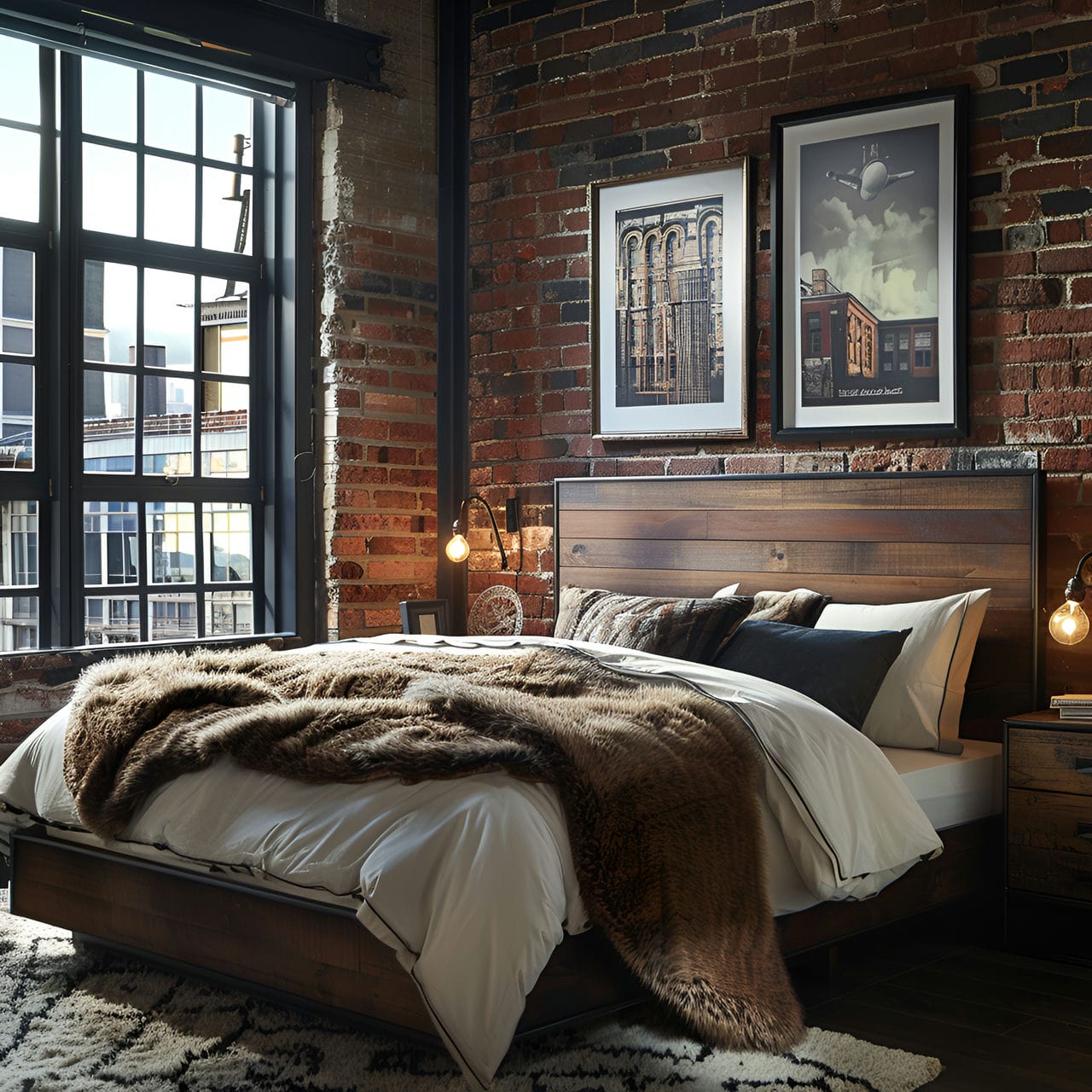
Is an architect required to renovate a bedroom?
No, an architect is not required to renovate a bedroom, but it is advised to hire one. If the project involves only cosmetic changes like painting, updating flooring, or replacing fixtures. For simple renovations, a contractor or interior designer may suffice. The renovation involves structural changes, such as moving walls, altering windows, or adding new architectural features, consulting an architect can be beneficial. Architects provide expertise in design, structural integrity, and compliance with building codes, which is crucial for more complex projects. The need for an architect depends on the renovation’s scope and complexity.
How can an architect help you upgrade a bedroom?
Listed below are the ways that an architect can help an owner upgrade a bedroom:
- Space planning: An architect can help redesign the bedroom’s layout to make it more functional and aesthetically pleasing. This could involve repositioning windows, doors, and furniture and ensuring enough space for movement and storage.
- Light and ventilation: Architects can identify ways to increase natural light and ventilation in a bedroom. This could involve adding or enlarging windows or using light shelves or reflective materials.
- Furniture arrangement: An architect can help arrange furniture in the bedroom. This involves positioning the furniture to maximize space, enhance functionality, and improve the room’s look.
- Material selection: An architect can assist in selecting materials for the bedroom that are durable, easy to maintain, and pleasing. This could involve choosing materials for the flooring, walls, and furniture.
- Incorporating accessories: An architect can help incorporate accessories into the bedroom design. This could involve selecting curtain rods, provision for mattress canopies, and other decorative elements that make the room more attractive.
- Ensuring clear movement patterns: An architect can ensure the bedroom has clear exit points and movement patterns. This involves designing the room to allow easy movement and access to different areas, such as the balcony, restroom, or closet.
- Budget planning: An architect can help plan the budget for the bedroom renovation. This involves estimating the cost of materials, labor, and other expenses and ensuring that the renovation can be completed within the set budget.
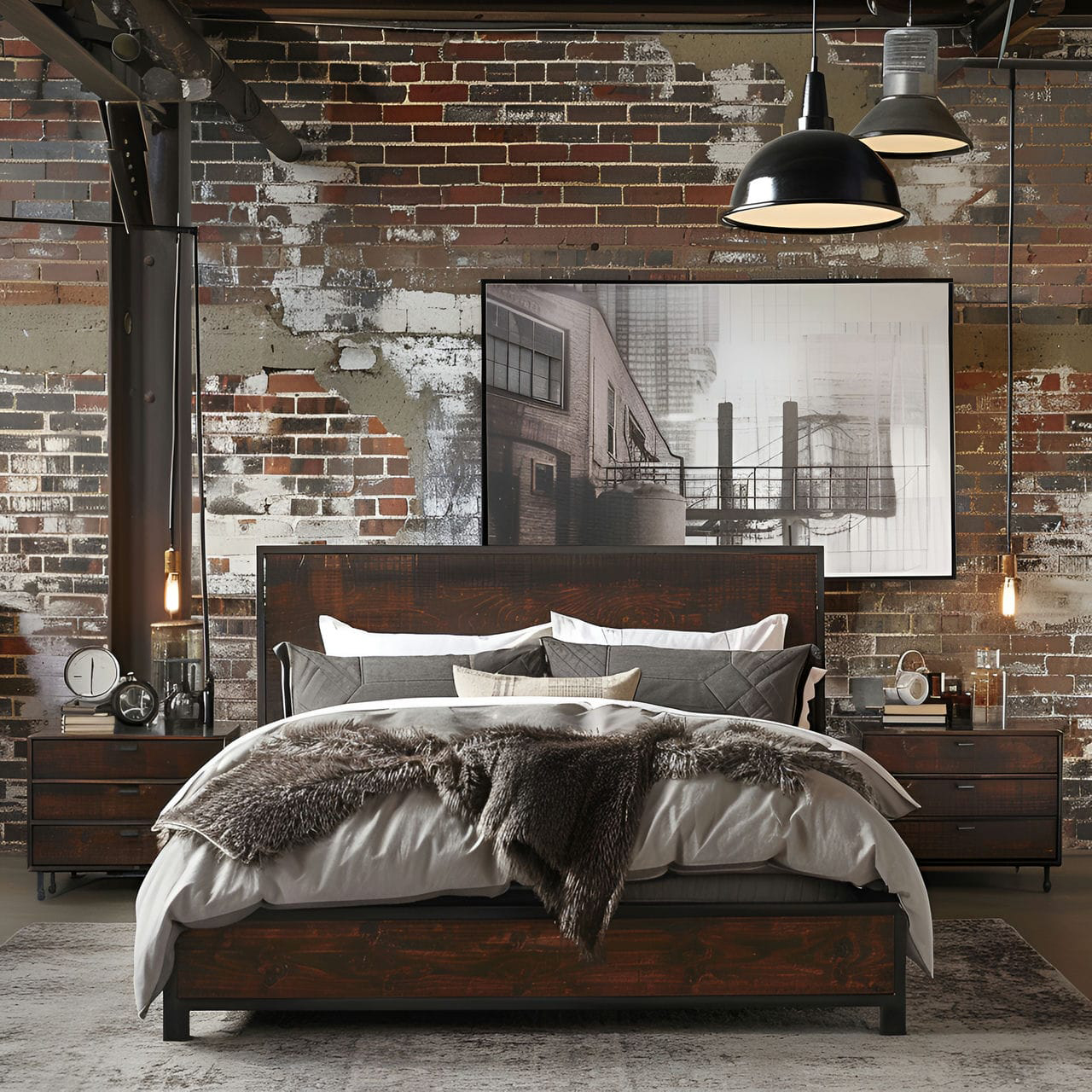
How much does it cost to hire an architect to renovate a bedroom?
The average cost to hire an architect to design a residential bedroom renovation ranges from $800 (€720, £600) to $5,000 (€4,500, £3,800). Most architects charge $100 (€90, £75) to $175 (€155, £135) hourly. Refreshing a 110 square foot (10 square meters) space with new finishes/furniture may take 6-10 hours for fees of $800 (€720, £600). Transforming a 130 square foot (12 square meters) bedroom while working within structural constraints like adjusting closets or lighting plans requires 10-15 architectural hours averaging $1,500 (€1,350, £1,150). Top-tier interior designers tailoring high-end contemporary master suites or multi-room children’s bedroom suites with integrated themed custom millwork, specialty lighting, and luxe materials charge $5,000+ (€4,500+, £3,800+). Their elaborate, coordinated layouts can take 30-50 hours. Typical bedroom update concepts run $800 (€720, £600) to $1,500 (€1,350, £1,150) including some customization. Extensive reconfigurations allowing signature style built-ins or designer showrooms to match required work time/complexity between $1,500 (€1,350, £1,150) to $5,000+ (€4,500+, £3,800+).
Is it worth it to hire an architect to upgrade a bedroom?
Yes, hiring an architect to upgrade a bedroom can be worth it. An architect brings professional expertise in maximizing space utilization, ensuring structural integrity, and creating pleasing designs. They can provide innovative solutions to challenges like limited space or awkward room layouts. Architects can help navigate building codes and permits crucial for significant structural changes. Their knowledge of sustainable and efficient design can also lead to long-term savings in energy costs. An architect might not be necessary for simpler bedroom upgrades like cosmetic changes or small-scale renovations, and a skilled contractor could suffice.
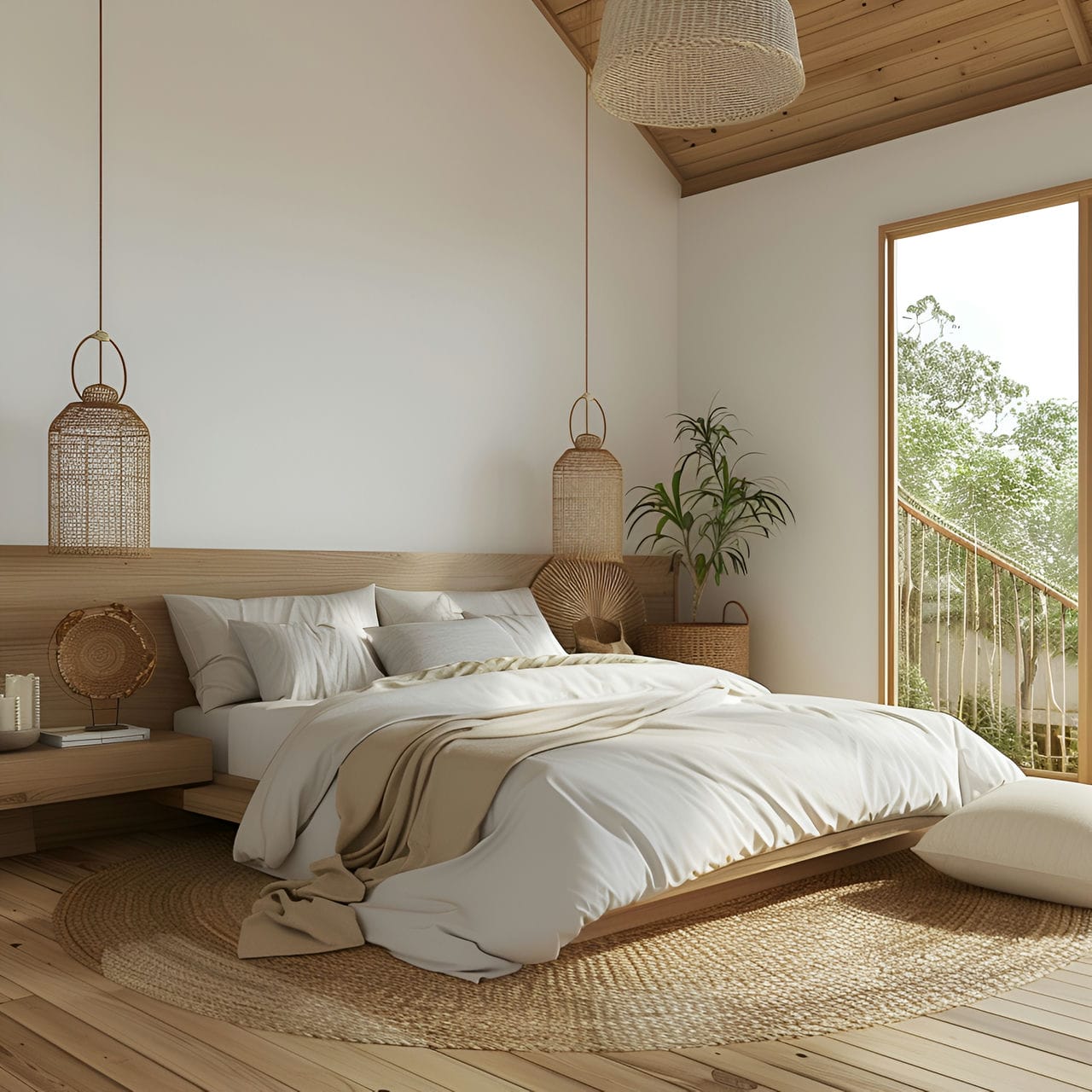
How long is needed to redecorate a bedroom?
To redecorate the bedroom, a timeframe of 2 to 6 weeks is needed. Firstly, simple redecorations like painting and minor decor changes can be completed in 1 to 2 weeks. This includes preparation, drying times for paint, and minor furniture rearrangements. Secondly, incorporating new furniture or updating fixtures extends the timeline to 2 to 3 weeks, accounting for delivery and assembly time. Thirdly, more extensive redecorations involving flooring replacement or significant furniture changes can take 3 to 4 weeks. This includes removing old items, preparing the space, and installing new elements. Lastly, if the redecoration involves custom-made elements like bespoke furniture or made-to-order items, the timeline can extend to 5 or 6 weeks, factoring in the manufacturing and delivery time.
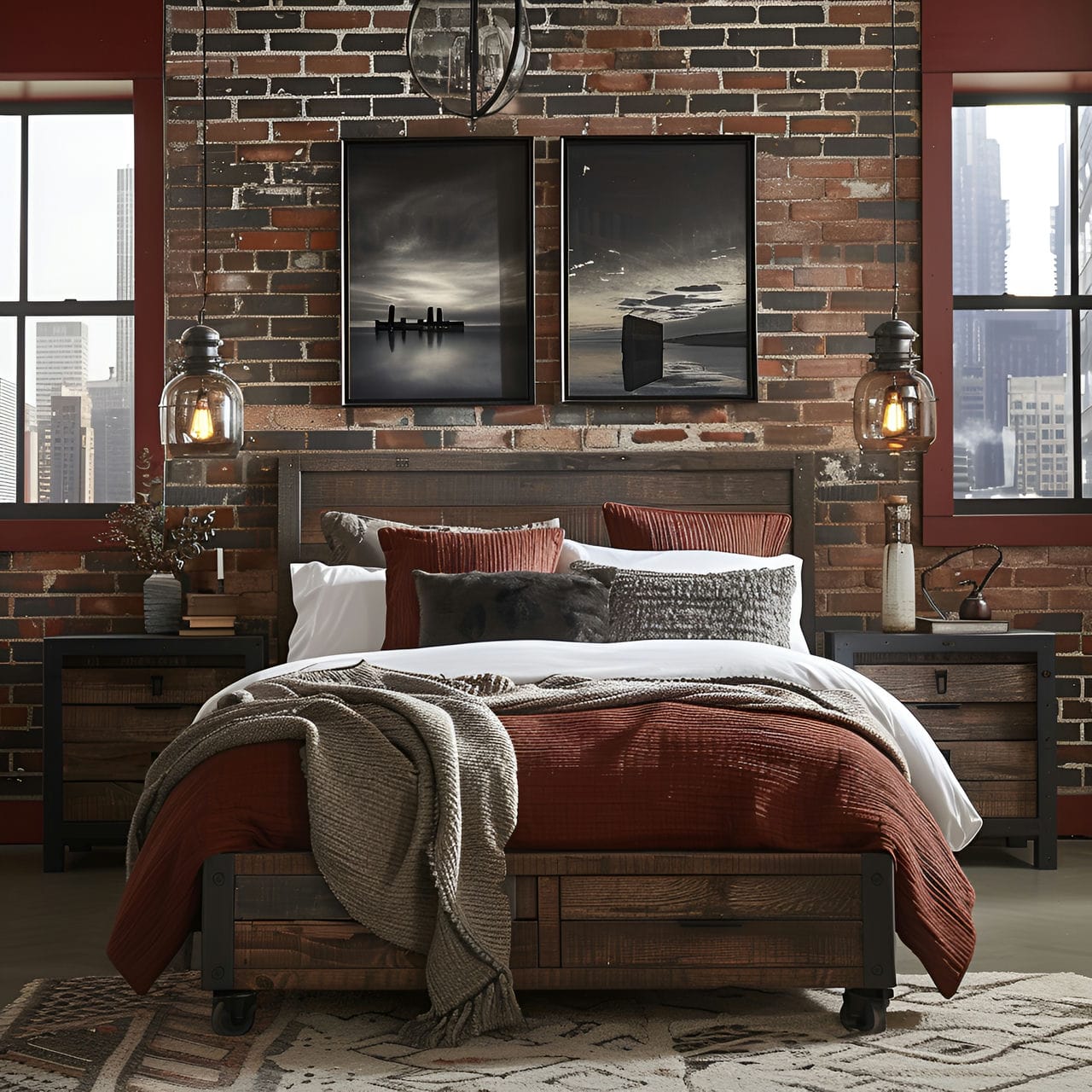
What are the struggles of the homeowner to redecorate a bedroom?
Listed below are the struggles of the homeowner to redecorate a bedroom:
- Space limitations: One of the biggest challenges in redecorating a bedroom is dealing with space limitations. This can make it difficult to fit in all the desired furniture and accessories, limiting the options for rearranging the room layout.
- Budget constraints: Redecorating a bedroom can be expensive, especially when buying new furniture or hiring professionals. Budget constraints can limit the options for materials, furniture, and other elements and may require compromises.
- Lighting issues: Choosing the right natural and artificial light balance can be difficult for bedrooms. Too little light can make the room gloomy, while too much can make it hard to sleep.
- Storage needs: Finding enough storage space in a bedroom can be challenging, especially in smaller rooms. This can make it difficult to keep the room tidy and organized and can limit the options for furniture placement.
- Style decisions: Choosing a style or theme for the bedroom can be difficult, especially if the homeowner has diverse tastes or is shared by two people with different preferences.


